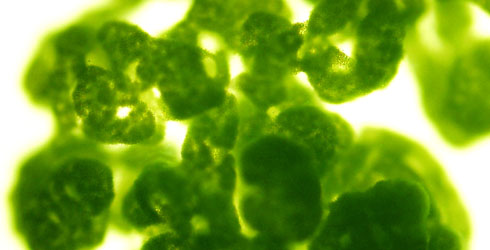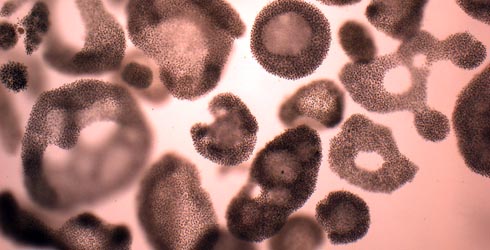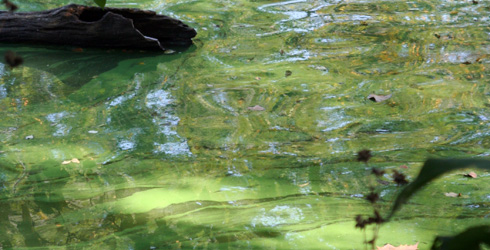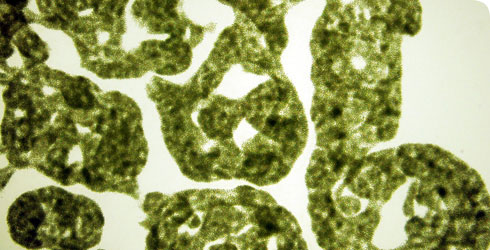Microcystis aeruginosa (cyanobacteria)
Microcystis aeruginosa is a species of photosynthetic bacteria called cyanobacteria.
It was originally thought to be a species of alga. Thanks to the chlorophyll that gives it its green colour, it was called a blue-green alga.
Blooms of cyanobacteria can cause water quality and management issues.
Species detail
-

Taxonomy
Find out why these pigmented bacteria were originally classified as algae.
-

Distribution
This widely distributed bacterium prefers stagnant water and can grow rapidly in some places. Find out where.
-

Biology
When Microcystis aeruginosa grows rapidly it produces toxins that can be harmful to humans and animals. Find out more.
-

References
Get more reference material for Microcystis aeruginosa.
Images

Microcystis aeruginosa.
© Susie Woods
Microcystis aeruginosa colonies isolated in New Zealand.
© Susie Woods
Microcystis aeruginosa colonies from Lac Saint Charles, Quebec, Canada.
© Sébastien Bourget
Cyanobacterial bloom in a lake, New York, USA.
© Anne D JungblutAbout the author

Dr Anne Jungblut
Researching cyanobacterial diversity and ecology in the Genomics and Microbial Biodiversity Division, Department of Life Sciences.
Author's quote
"I chose Microcystis aeruginosa because it is one of the most important cyanobacteria in connection with toxic blue-green algae blooms. Elevated concentrations of its toxin microcystin can be very harmful to humans and animals."
